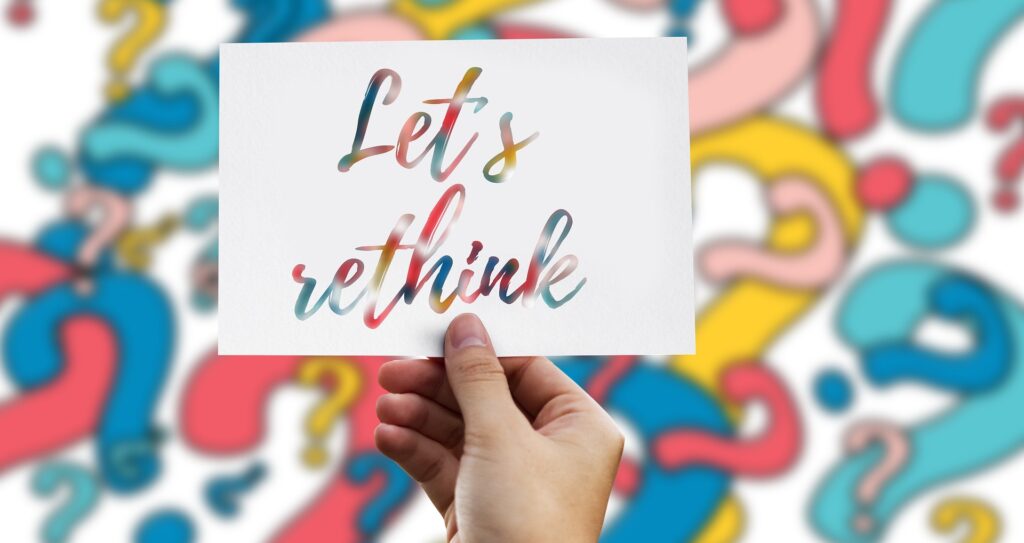The Importance of Clear Communication and Maintaining Respect

Misunderstandings are a natural part of communication, especially when you’re speaking in a second language or working with people from different cultural backgrounds. We’ve all been there—when someone misinterprets what you’ve said, and you’re left wondering how to clarify the situation without offending them.
When you correct someone, it’s crucial to do it in a polite and respectful way so the conversation remains positive and constructive. In this post, I’ll share practical tips for correcting misunderstandings with kindness, so you can communicate more clearly while maintaining strong relationships.
Common Concerns

When someone misinterprets what you’ve said, it’s easy to feel frustrated or embarrassed, particularly in a new cultural setting. In American culture, we value clear communication. We also highly prioritize politeness and social harmony. This can make the process of correcting someone a bit tricky. You don’t want to come off as rude or condescending.
Here are some common concerns that many people face when trying to correct misunderstandings:
“I don’t want to offend the other person.”
In American culture, we tend to avoid direct confrontation. You might worry that correcting someone could damage your relationship or make you seem impolite.
“I’m unsure how to phrase my correction in a way that feels respectful.”
It can be tricky to balance honesty with kindness, especially when English isn’t your first language. You don’t want to sound too blunt or too apologetic. You want to find a middle ground.
“I’ve had this happen before, and I just don’t know how to handle it next time.”
If you’ve been in situations where you’ve had to correct someone, you might feel uncertain about the best approach or how to avoid misunderstanding again.
These are all valid concerns, and you’re certainly not alone. American culture places a lot of emphasis on maintaining a positive atmosphere during interactions, especially in professional and social settings. Correcting someone isn’t just about getting your point across—it’s about doing so in a way that keeps the conversation respectful and collaborative.
It’s a Balance
I know how uncomfortable it can feel to correct someone, especially if you’re worried about coming across as rude or awkward. When you’re in a new cultural environment, like in the U.S., it can feel especially challenging. You want to be understood, but you also don’t want to upset someone or make them feel bad for misunderstanding you. It’s a fine balance.
In American culture, politeness is key, and there’s often a strong desire to maintain good relationships, especially in the workplace or social settings. It’s common to feel unsure about how to handle these moments with grace. In fact, my clients have shared that they felt hesitant or worried about sounding overly critical when correcting someone.
I want you to know that it’s perfectly normal to feel this way. Your intentions are always good—you just want to ensure you’re understood clearly, and sometimes, that requires making a polite correction. Everyone has experienced this, and every situation is an opportunity to improve how you navigate these moments.
In fact, people will often appreciate the correction when it’s done with tact and care. Remember, no one is perfect in communication, and misunderstandings are part of the process. You’re not alone in this, and with a little guidance, you’ll soon feel more confident in these situations
Perspective Shift
Instead of seeing these moments of misunderstanding as awkward or uncomfortable, let’s shift the perspective. Think of them as a chance to strengthen your communication and build better connections. Correcting someone politely isn’t just about setting the record straight—it’s an opportunity to ensure your message is heard clearly. This can lead to deeper understanding and more meaningful conversations.
In American culture, people generally appreciate when you take the time to clarify something, especially if it prevents confusion or miscommunication down the road. By gently correcting someone, you’re not only helping them understand you better, but you’re also showing that you value clear, effective communication. This is something people in the U.S. value.
Furthermore, your ability to handle these moments with patience and grace demonstrates confidence in your communication skills. It shows that you’re actively engaging in the conversation and committed to making sure everything is understood, which can help foster trust and respect.
So, rather than feeling embarrassed or worried, try to view these moments as an opportunity to demonstrate your commitment to clear, respectful dialogue. The more you practice correcting misunderstandings in a positive, polite way, the easier it will become. And soon, it’ll feel like second nature!
How To Do It
Now that we’ve reframed the situation, let’s look at some simple, effective ways to correct someone politely when they misunderstand you. These strategies will help you navigate these moments smoothly and with confidence.
- Use a Gentle Tone
One of the easiest ways to maintain politeness when correcting someone is by using a calm, friendly tone. Instead of sounding harsh or frustrated, keep your voice soft and understanding. For example:- “I think there might have been a little misunderstanding.”
- “Oh, I see what you’re saying, but I meant to say something different.”
A warm tone helps signal that you’re not upset, just clarifying.
- Acknowledge the Other Person’s Effort
If the person you’re speaking with tried to understand, acknowledging their effort can help keep the conversation positive. For example:- “I appreciate your effort to understand what I meant.”
- “Thanks for catching that! Let me explain it a bit differently.”
This shows respect for their attempt and keeps the dialogue respectful.
- Rephrase or Restate What You Said
Sometimes, people misunderstand because of the way something is phrased. In such cases, try rewording what you said in a clearer, simpler way. For example:- “Let me explain that again in a different way.”
- “What I meant was…”
Rephrasing allows for clarification without sounding condescending or correcting someone directly.
- Use Humor (When Appropriate)
If the misunderstanding is lighthearted or minor, humor can be a great way to break the tension. Be careful not to make the other person feel embarrassed. For example:- “I guess I need to work on my accent a little more!”
- “That’s a fun misunderstanding—let me try to say it more clearly.”
Humor, used in moderation, can make the situation feel more relaxed and less uncomfortable for both parties.
- Offer Alternatives or Examples
Providing an example or alternative helps the person understand what you meant more clearly. It also shows that you’re invested in making sure they understand. For example:- “For example, when I said X, I actually meant Y.”
- “Let me give you a clearer example of what I mean.”
Giving an example offers clarity and helps the other person see your perspective in a practical way.
By using these strategies, you can turn moments of misunderstanding into opportunities for connection and clear communication. With practice, you’ll feel more confident in handling these situations in a polite and constructive manner.
Look Forward to Opportunities to Strengthen Communication

Correcting someone when they misunderstand you doesn’t have to be a stressful or uncomfortable experience. In fact, it’s an opportunity to enhance your communication and demonstrate patience, kindness, and cultural awareness—values that are highly valued in American culture.
By applying the tips we discussed—using a gentle tone, acknowledging the other person’s effort, rephrasing for clarity, adding humor when appropriate, and offering examples—you’ll feel more confident and natural in these situations. Remember, misunderstandings happen to everyone, and they’re part of the learning process.
Don’t shy away from politely correcting others; instead, embrace it as an opportunity to connect, clarify, and build stronger relationships. With practice, you’ll turn these moments into small victories that improve both your communication skills and your confidence.
What can you do next?
Ready to boost your communication skills and feel more confident in those tricky moments? If you want more personalized strategies or have specific questions about polite correction, I’m here to help!
- 1:1 Coaching: Let’s work together in a tailored session to address your communication needs and fine-tune your pronunciation and language skills.
- Book a Free Discovery Call: Unsure where to start? Let’s chat! We’ll pinpoint your specific concerns and create a plan that works for you.
- Explore My Courses: If you’re looking for structured lessons, check out my courses that focus on pronunciation, communication strategies, and confidence-building.
- Join the Conversation: Feel free to reach out with any questions, or drop a comment below if this post resonated with you. I’d love to hear your thoughts!
Don’t let misunderstandings hold you back—let’s work together to strengthen your communication and improve your connections with others.

0 Comments